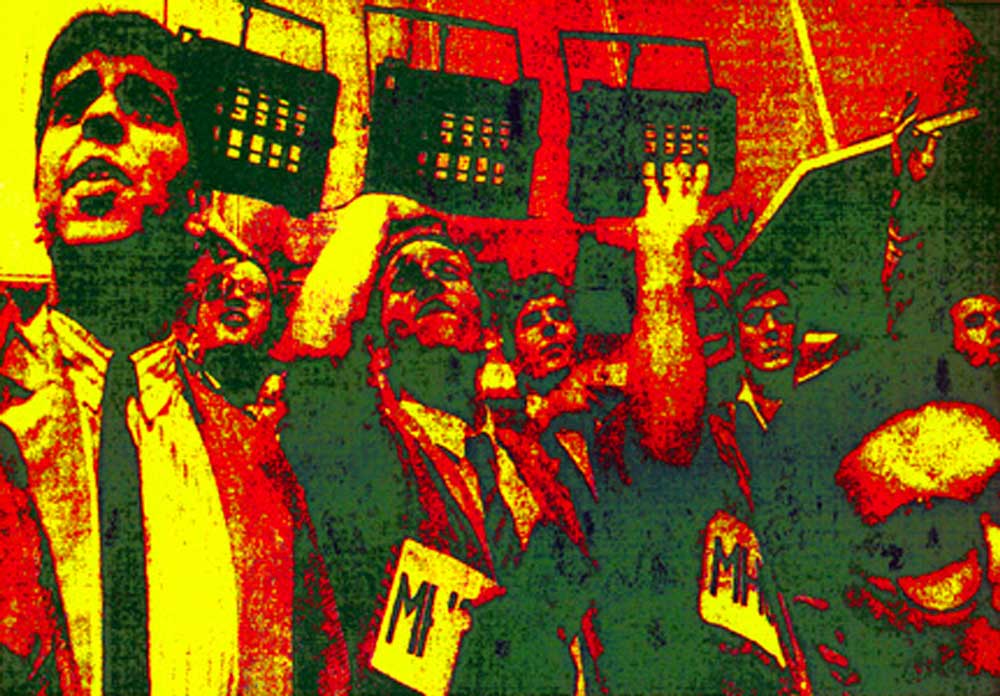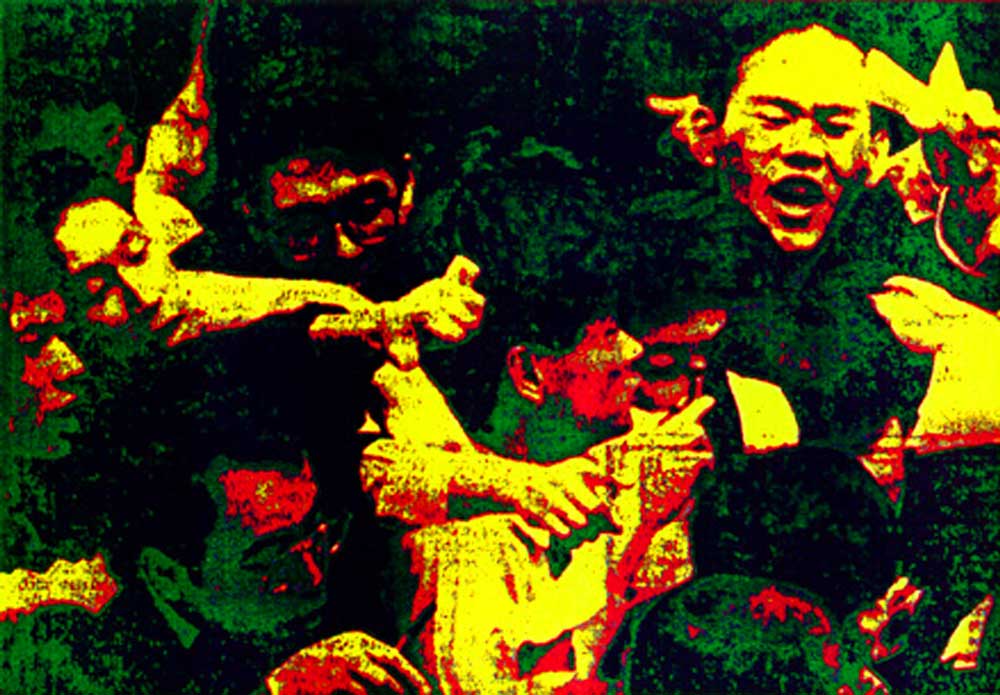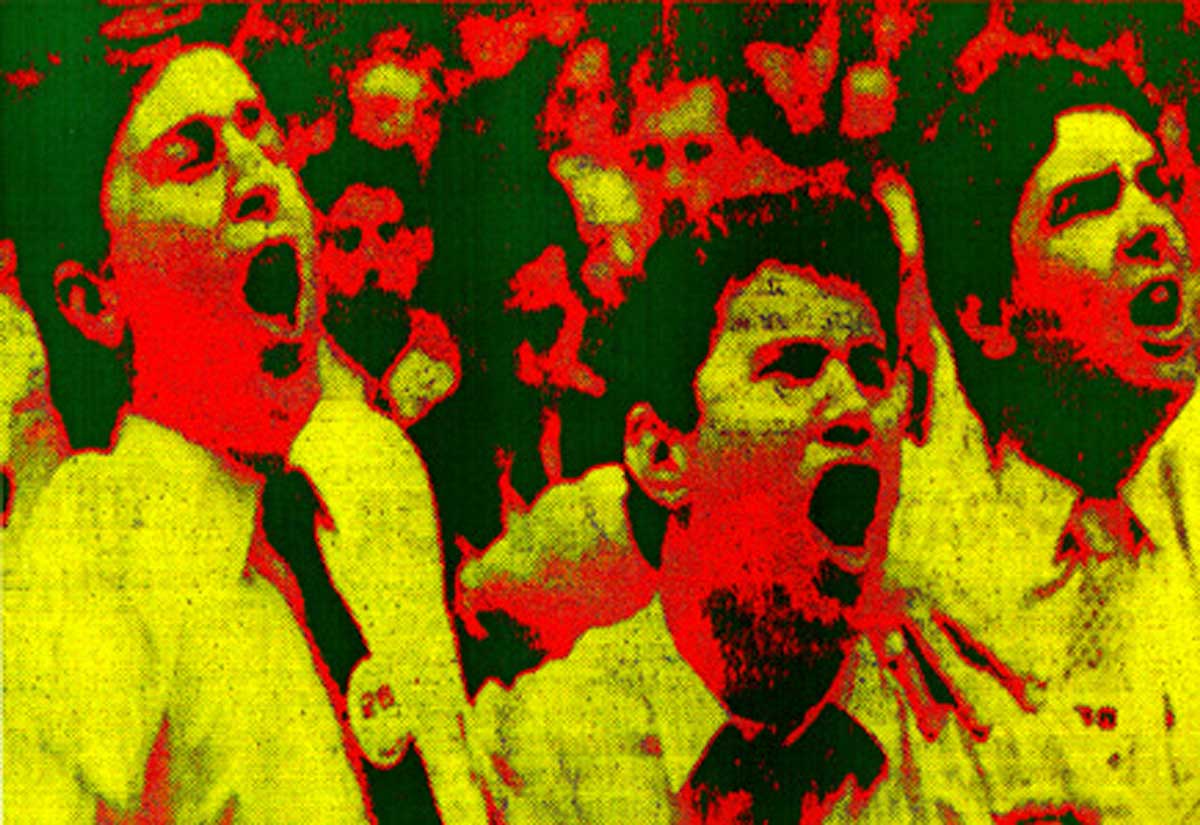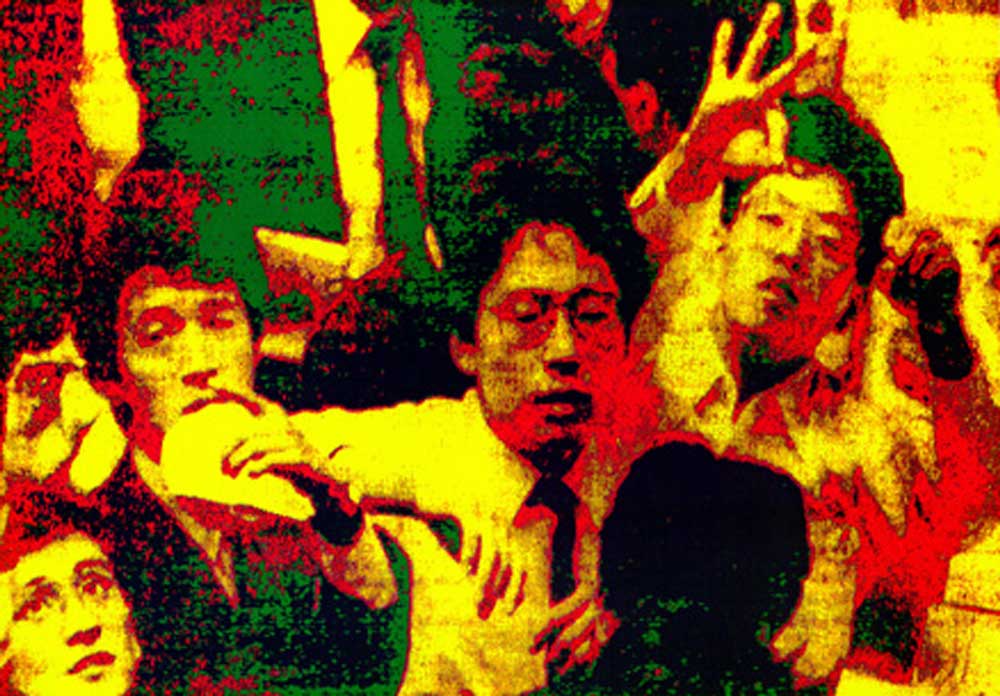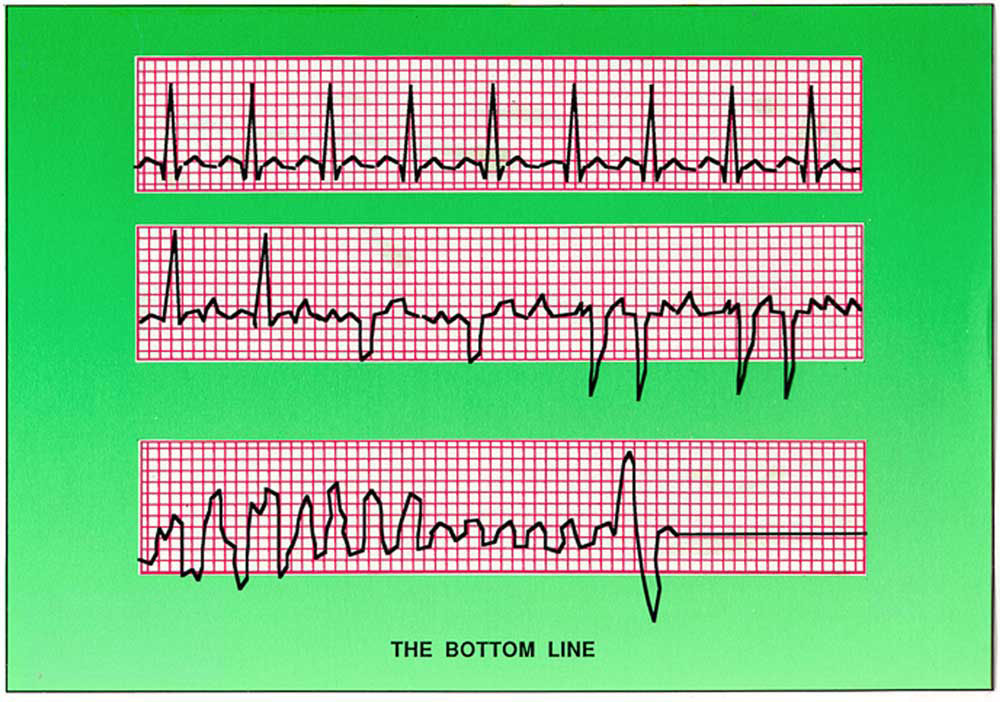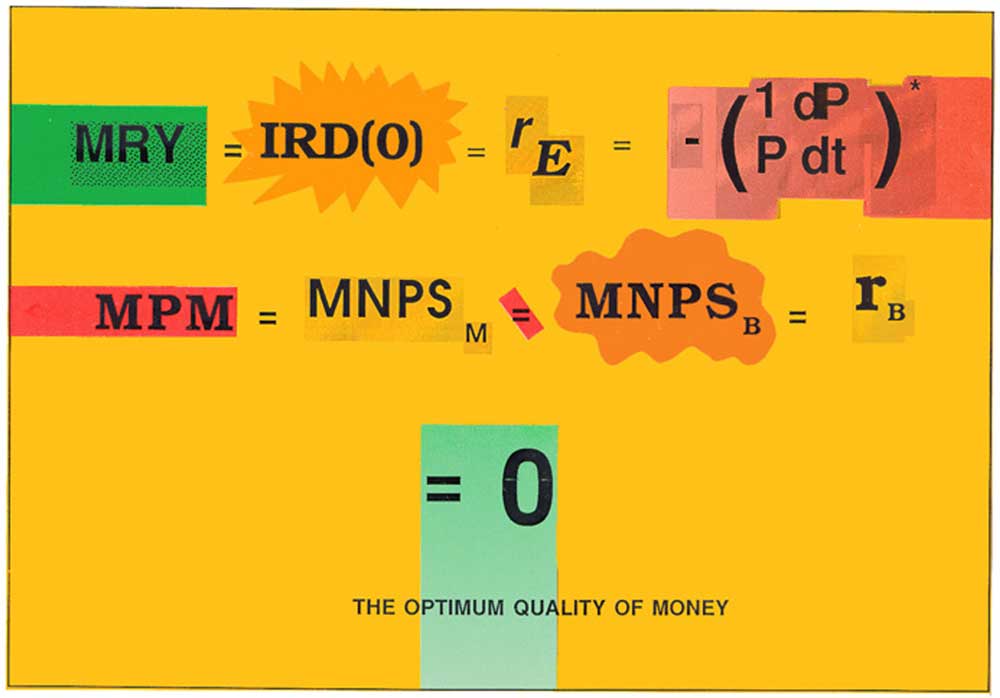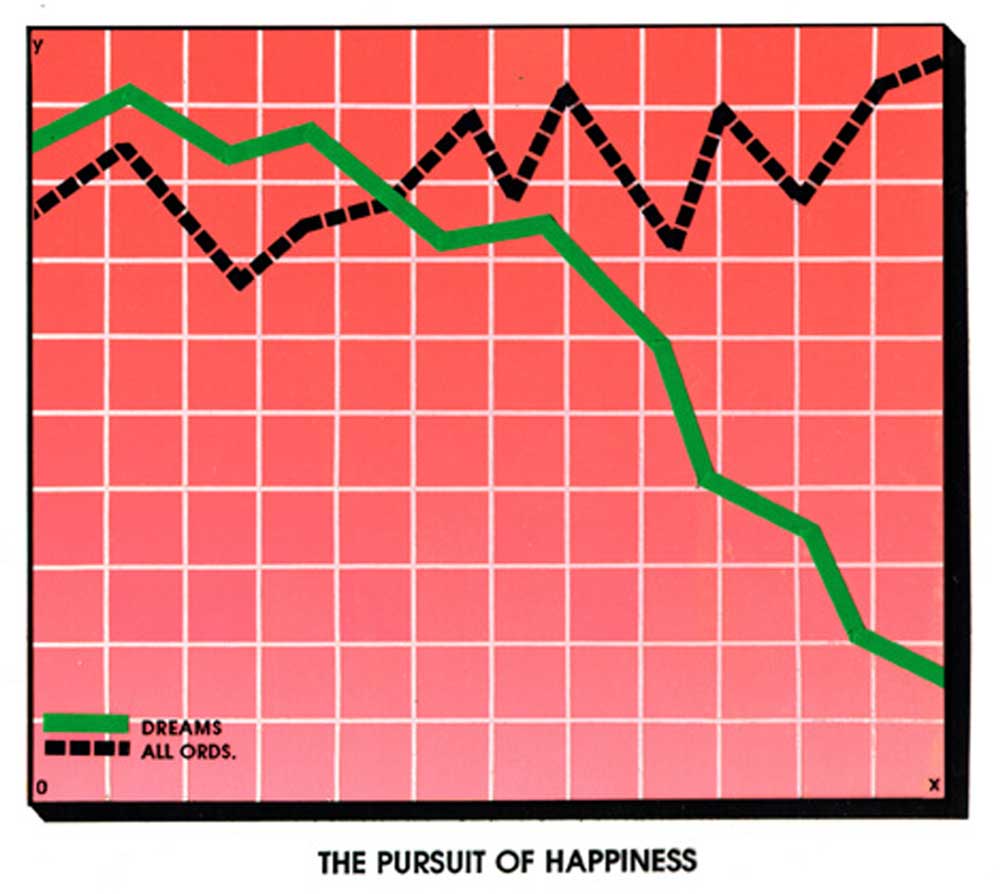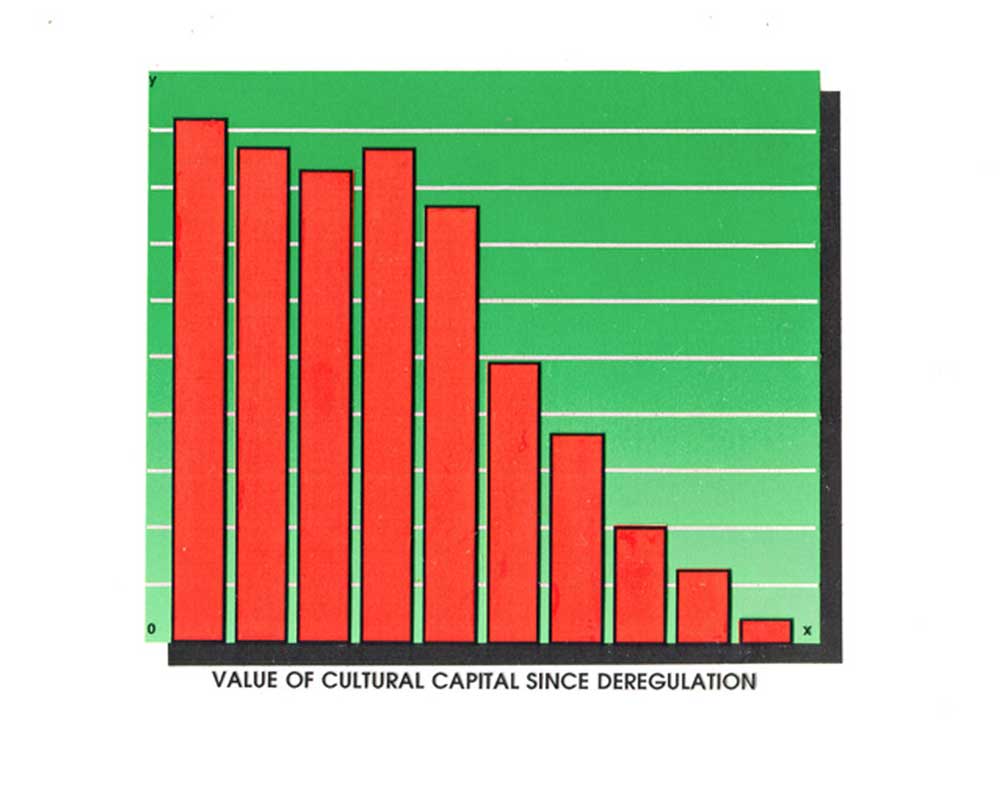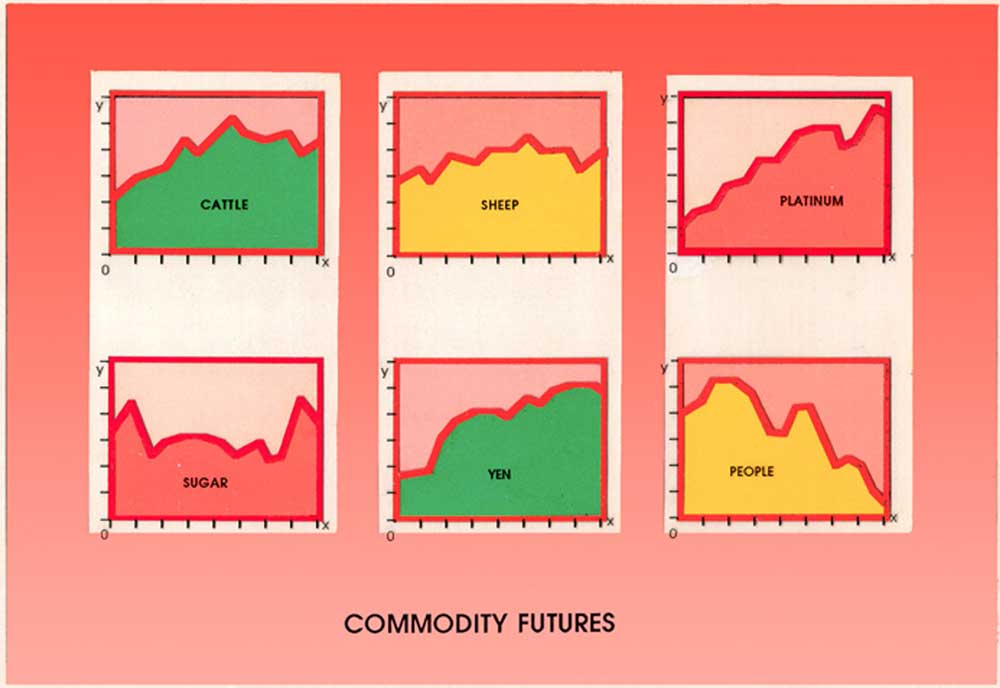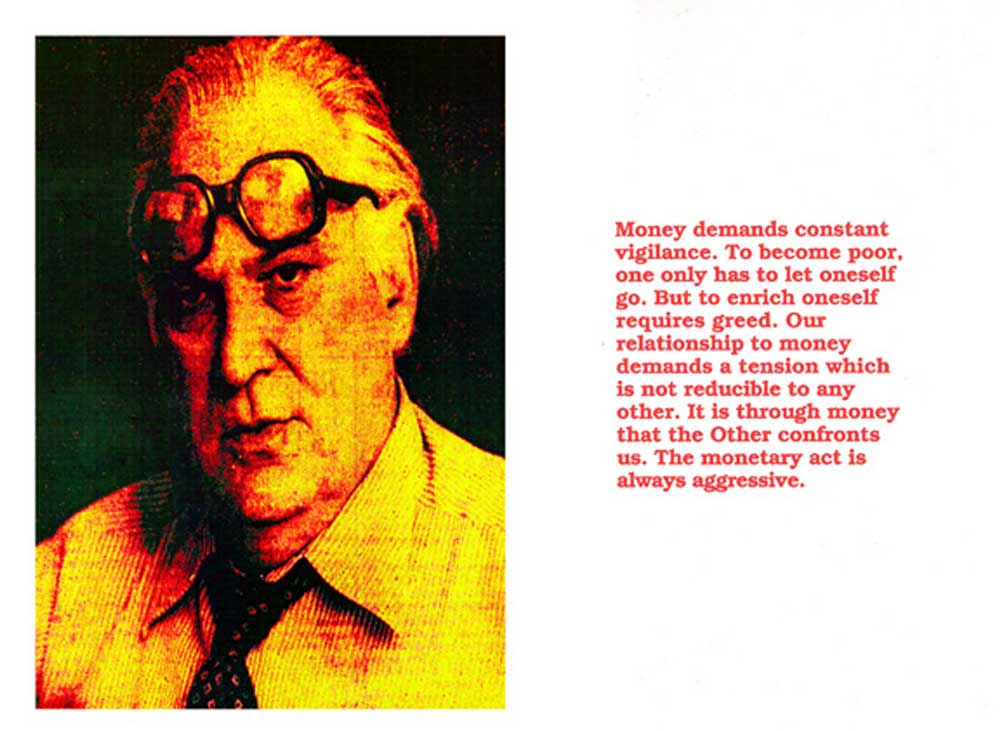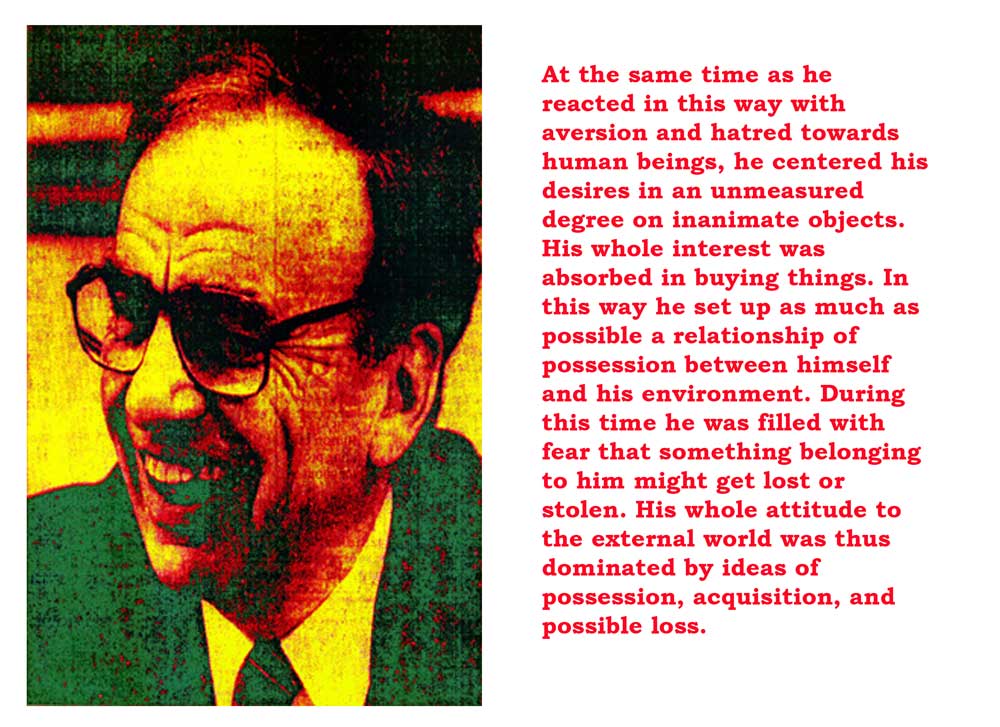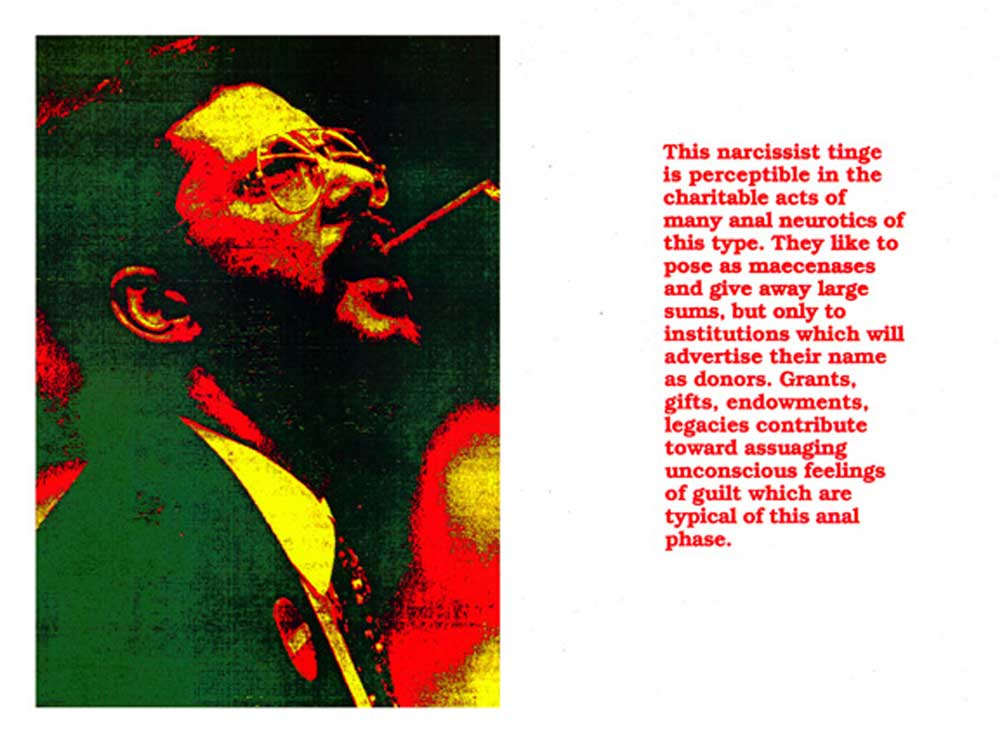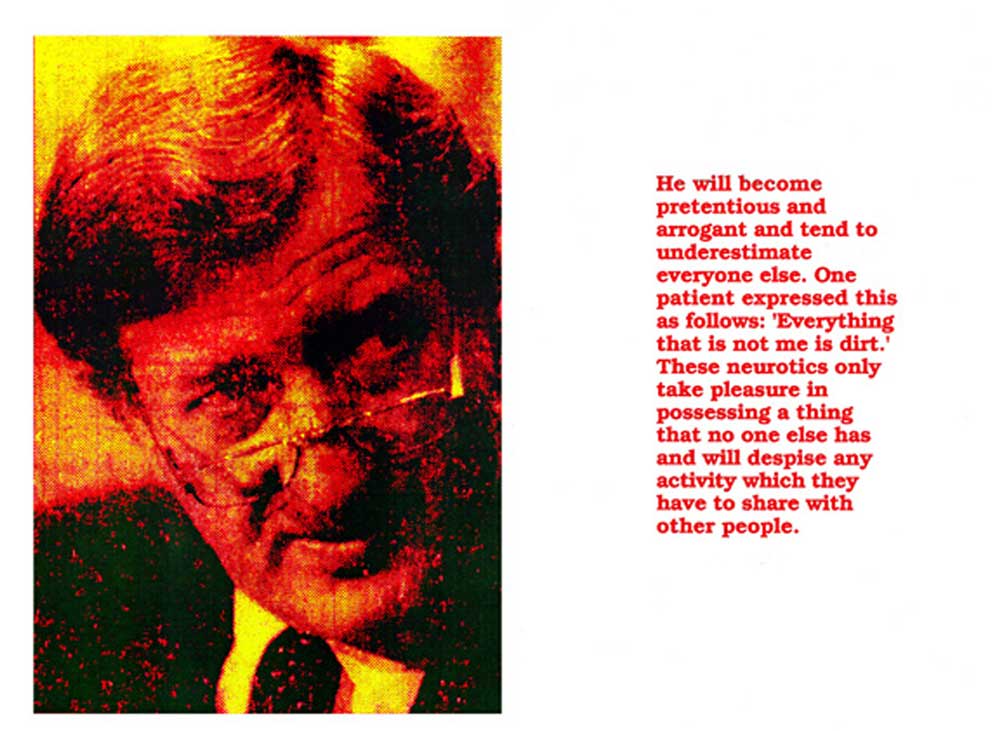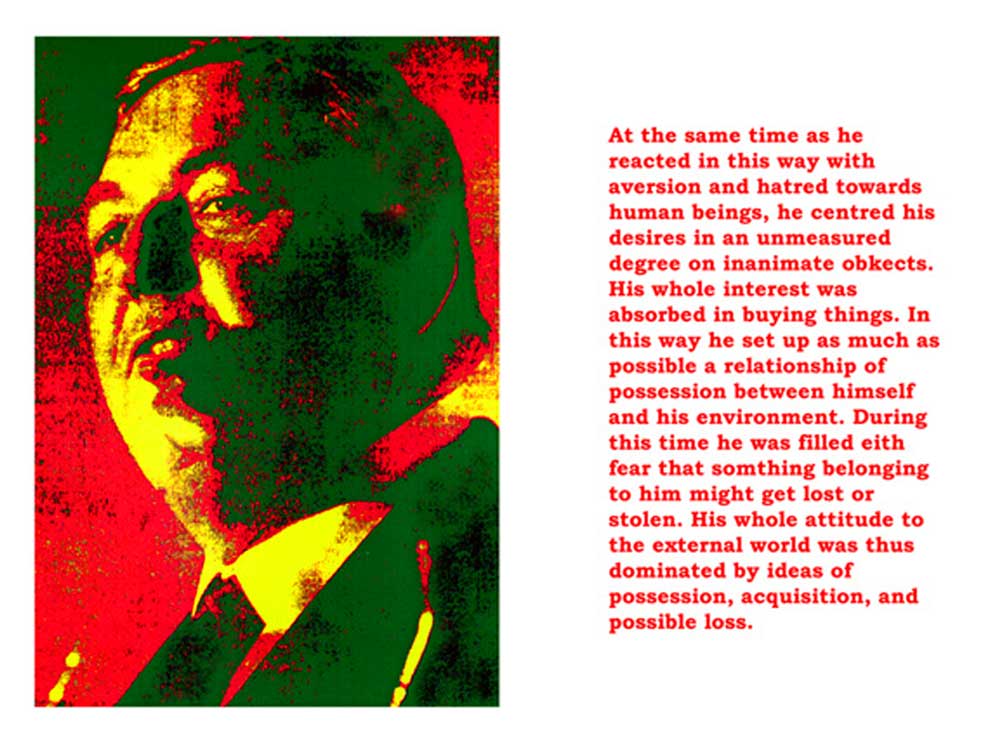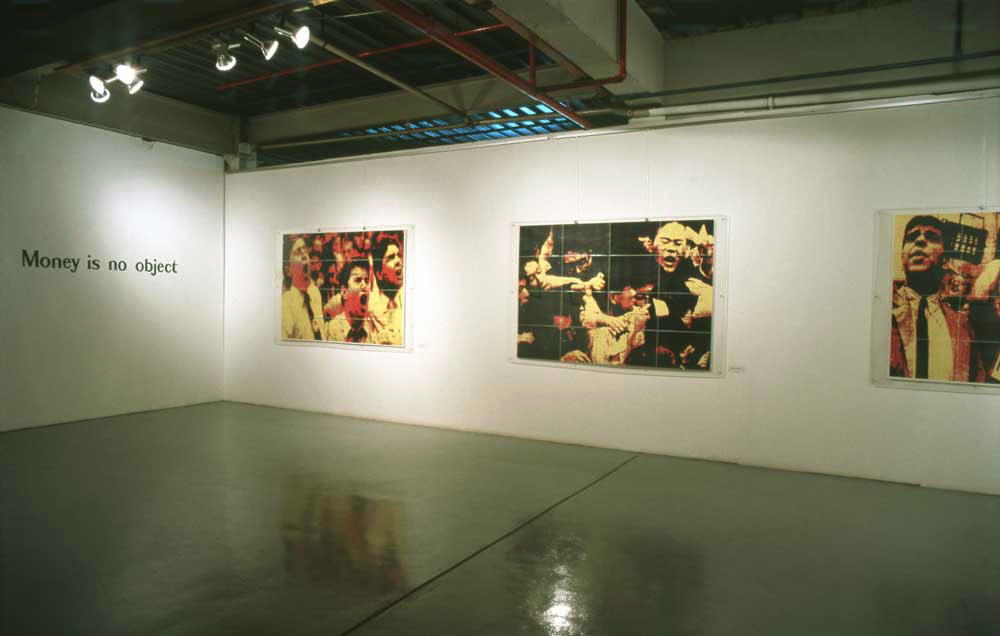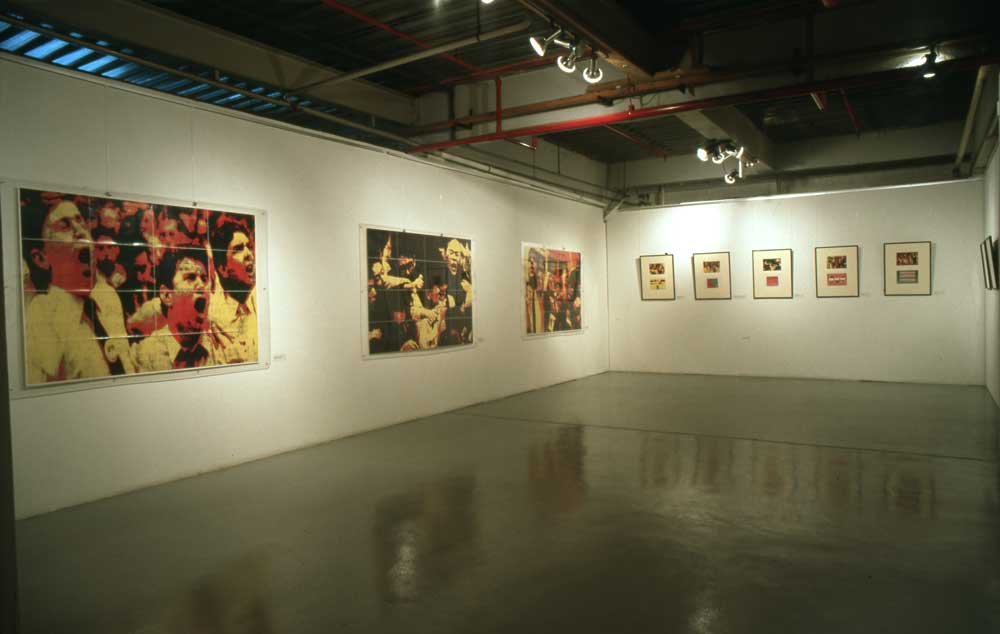Money is No Object (1989)
Experimental Art Foundation, Adelaide, South Australia. May 31 – June 11, 1989
College Gallery, South Australian College of Advanced Education, Underdale, June 21 – July 2, 1989
Mori Gallery, Sydney, December 12 – 30, 1989
Money demands constant vigilance. To become poor, one only has to let oneself go. But to enrich oneself requires greed. Our relationship to money demands a tension which is not reducible to any other. It is through money that the Other confronts us. The monetary act is always aggressive.' André Amar, The Psychoanalysis of Money
Around the time of the October 1987 stock market 'correction', the visual impact of the business pages began to intensify. Dramatic graphs and charts become more common - the drama emphasised by the use of non-zero baselines in graphs, greatly exaggerating rises and falls. Large portraits of businessmen appeared and, especially after the October market falls, photographs of hysterical floor traders gesticulating wildly, as if they were inmates of Salpêtrière, under the treatment of Jean-Martin Charcot.
This greater visualisation of markets and of human figures within them coincides with the disappearance of visual drama from trading floors. Instead of the gestural movement of (human) figures bargaining, the only movement you see on most trading floors now is the movement of figures on a screen. Some see this change as a shift from transactional network to scopic forms of trading, with the move to computerised foreign currency exchange systems in the early 1980s. In any case, images of the bodies of those hysterical men losing money in the late 1980s has begun to disappear, not only from trading floors but also from the business pages. But in 1988-9, they were everywhere.
Review/Discussion:
Susan Sheridan: 'Money is No Object: Recent Work by Helen Grace', Artlink, September 1989
Terence Maloon, Introduction to catalogue, Dende O Fin Do Imperio: Novo Fotografos Australianos (Casa Da Parra, Santiago de Compostela, Maio 1991

